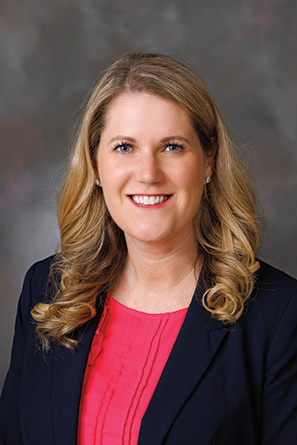Medicaid coverage for continuous glucose monitors proposed
The Health and Human Services Committee considered a bill Feb. 8 that would broaden coverage of continuous glucose monitors for Medicaid recipients.

LB933, introduced by Lincoln Sen. Carolyn Bosn, would expand Nebraska Medicaid coverage for continuous glucose monitors, or CGMs, to individuals with gestational diabetes. The devices read blood sugar levels and provide data every five minutes. Bosn said CGMs are the best and most cost-effective way for mothers with gestational diabetes to receive complete care.
“The use of continuous glucose monitors for moms with gestational diabetes results in less gestational weight gain, better glycemic control, reduced risk of preeclampsia … [and] can mean fewer neonatal intensive care admissions lasting longer than 24 hours,” she said.
LB933 also would expand coverage to include CGMs for Medicaid recipients receiving any type of insulin therapy. Current Nebraska Medicaid regulations cover CGMs only for individuals receiving intensive insulin therapy, which is defined as three or more injections per day or the use of an insulin pump.
Bosn said the American Diabetes Association recently updated its standard of care to recommend CGMs for all patients on insulin.
“Unfortunately, when the Medicaid regulations were put in place to implement the use of CGMs, Nebraska missed the mark on how and when these important devices could be used,” she said. “When tools are available to both help the patients and save money, we should work to take full advantage of that technology.”
Leslie Eiland, an endocrinologist at the University of Nebraska Medical Center, testified in support of the bill on behalf of the Nebraska Hospital Association. She said the continuous data collected through CGMs helps physicians better understand their patients and how to effectively address their needs.
Eiland said working with data from sporadic finger pricks is like being asked to figure out the plot of a movie based on one or two still images. Data gathered from CGMs, however, is like watching the whole movie from start to finish, she said, allowing for safer and more effective treatment adjustments.
“CGM devices make the invisible, visible,” Eiland said. “[Patients] can see the direct impact of their food and activity choices on their blood glucose values in real time.”
Proponent Mikayla Wicks credited a CGM with saving her life when she was experiencing frequent and drastic drops in her blood sugar overnight during pregnancy. She said the CGM triggers a loud alarm on both her phone and her husband’s phone when her blood sugar drops below a certain level.
“When your body is in a state of panic and trying to survive, you’re not always able to wake up,” Wicks said. “Without the CGM, I believe I would not be sitting here … today.”
No one testified in opposition to LB933 and the committee took no immediate action on it.


